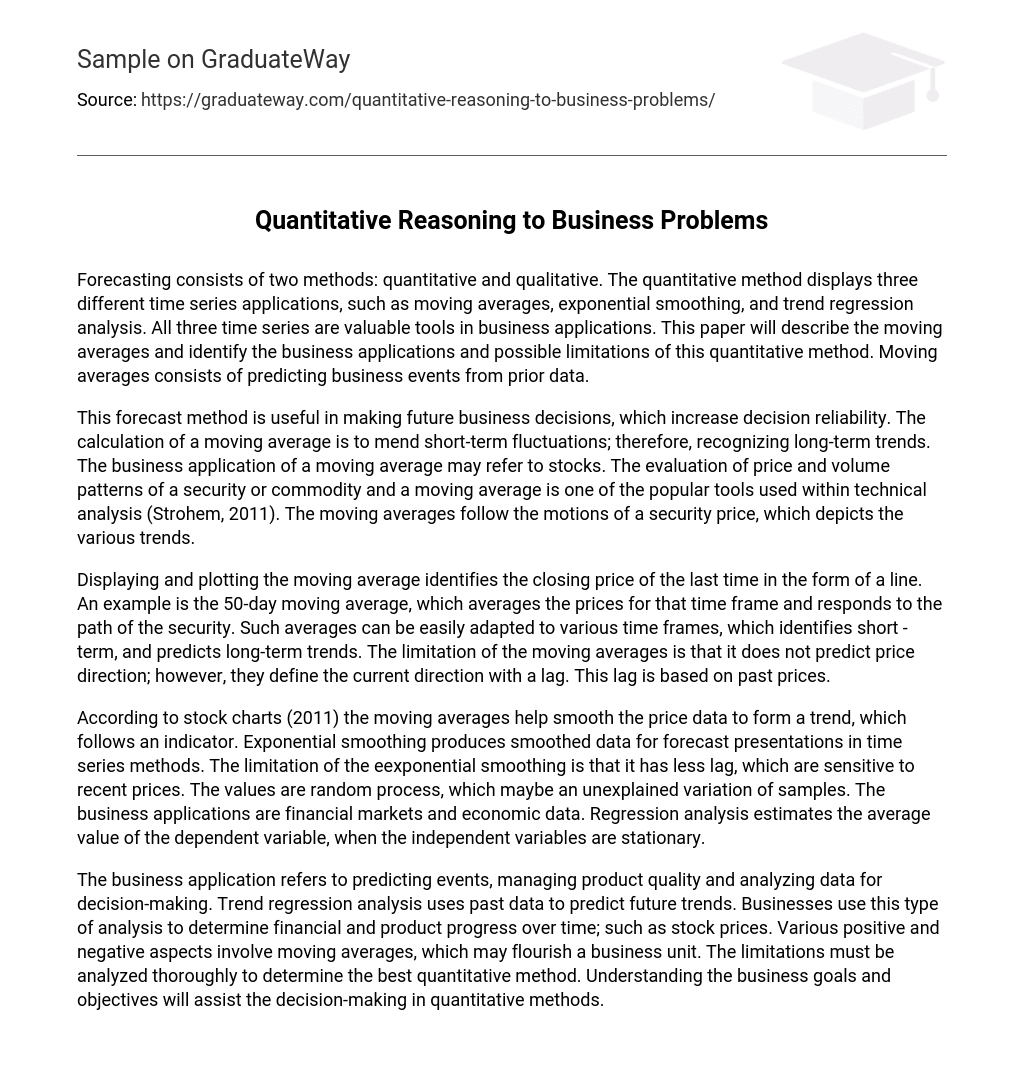Forecasting consists of two methods: quantitative and qualitative. The quantitative method displays three different time series applications, such as moving averages, exponential smoothing, and trend regression analysis. All three time series are valuable tools in business applications. This paper will describe the moving averages and identify the business applications and possible limitations of this quantitative method. Moving averages consists of predicting business events from prior data.
This forecast method is useful in making future business decisions, which increase decision reliability. The calculation of a moving average is to mend short-term fluctuations; therefore, recognizing long-term trends. The business application of a moving average may refer to stocks. The evaluation of price and volume patterns of a security or commodity and a moving average is one of the popular tools used within technical analysis (Strohem, 2011). The moving averages follow the motions of a security price, which depicts the various trends.
Displaying and plotting the moving average identifies the closing price of the last time in the form of a line. An example is the 50-day moving average, which averages the prices for that time frame and responds to the path of the security. Such averages can be easily adapted to various time frames, which identifies short -term, and predicts long-term trends. The limitation of the moving averages is that it does not predict price direction; however, they define the current direction with a lag. This lag is based on past prices.
According to stock charts (2011) the moving averages help smooth the price data to form a trend, which follows an indicator. Exponential smoothing produces smoothed data for forecast presentations in time series methods. The limitation of the eexponential smoothing is that it has less lag, which are sensitive to recent prices. The values are random process, which maybe an unexplained variation of samples. The business applications are financial markets and economic data. Regression analysis estimates the average value of the dependent variable, when the independent variables are stationary.
The business application refers to predicting events, managing product quality and analyzing data for decision-making. Trend regression analysis uses past data to predict future trends. Businesses use this type of analysis to determine financial and product progress over time; such as stock prices. Various positive and negative aspects involve moving averages, which may flourish a business unit. The limitations must be analyzed thoroughly to determine the best quantitative method. Understanding the business goals and objectives will assist the decision-making in quantitative methods.





